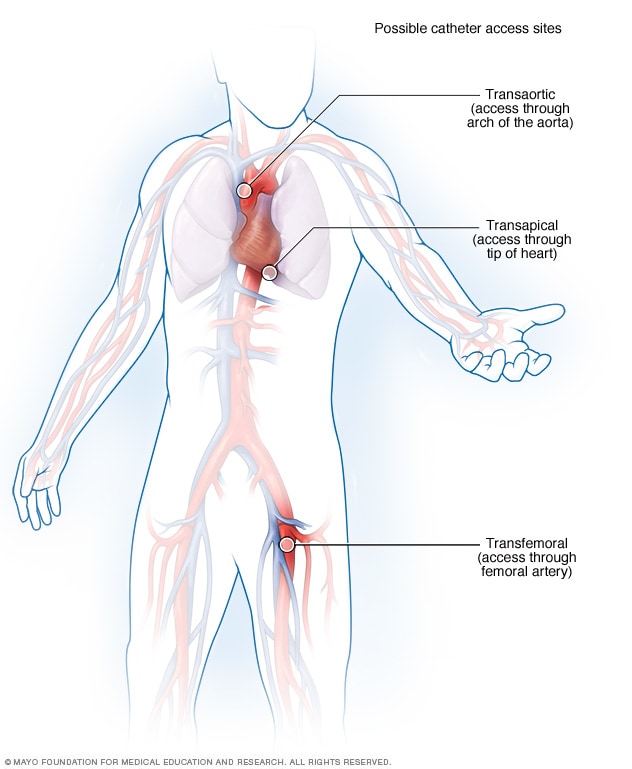Transcatheter aortic valve replacement (TAVR) is a minimally invasive heart procedure to replace a thickened aortic valve that can't fully open (aortic valve stenosis). The aortic valve is located between the left lower heart chamber (left ventricle) and the body's main artery (aorta). If the valve doesn't open correctly, blood flow from the heart to the body is reduced.

What you can expect
Before the procedure
A specialist will insert an IV into your forearm or hand and may give you a medication called a sedative to help you relax. Medication to prevent blood clots may also be given through the IV. You may also receive medication to reduce the risk of infection.
Hair may be shaved off at the location on your body where the procedure will take place.
During the procedure
Unlike surgical aortic valve replacement, which requires a long incision down the chest (open-heart surgery), TAVR is done using smaller incisions and a thin, flexible tube (catheter) to reach the heart.
To perform TAVR, a doctor inserts a catheter into a blood vessel, usually in the groin or chest area, and guides it into the heart. Moving X-ray images or echocardiogram pictures help the doctor place the catheter into the correct position.
A replacement valve made of cow or pig tissue is passed through the hollow catheter and placed in the area of the aortic valve. A balloon on the catheter tip inflates to press the new valve into place. Some valves expand without the use of a balloon.
The doctor removes the catheter once the new valve is securely in place.
During the TAVR procedure, the treatment team will carefully monitor your vital signs, including blood pressure, heart rate and rhythm, and breathing.
After the procedure
You may spend the night in the intensive care unit (ICU) for monitoring after your procedure. How long you need to stay in the hospital after TAVR depends on many things. Some people who have TAVR go home the next day.
Before you leave the hospital, your treatment team will explain how to care for any incisions and how to watch for signs and symptoms of infection. Warning signs of infection include fever, increased pain, and redness, swelling, draining or oozing at the catheter site.


